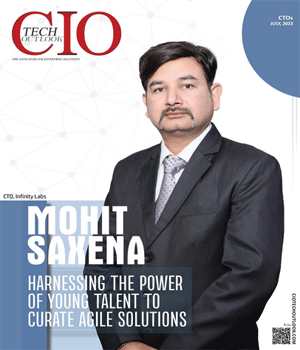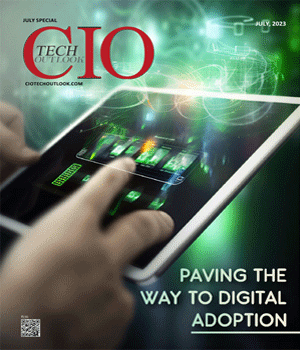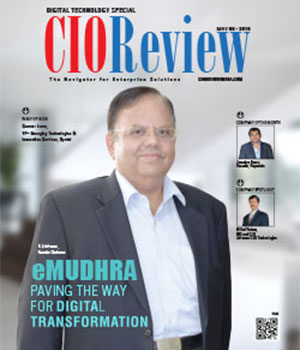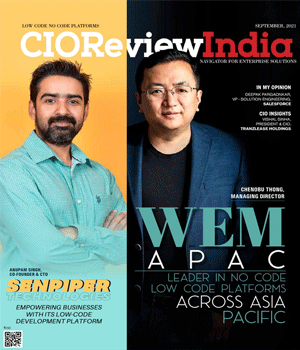
Trends of Digital Marketing and Its Impact on Business Growth
Chandrahas Panigrahi, Sr. Director-Consumer Business, Acer India
 The digital marketing landscape is becoming increasingly more complex and, in many ways, ephemeral. With the volatility of the digital sphere, the trends indicate several opportunities for brands looking to position themselves online.
The digital marketing landscape is becoming increasingly more complex and, in many ways, ephemeral. With the volatility of the digital sphere, the trends indicate several opportunities for brands looking to position themselves online.
As new technologies emerge, the associated risks for businesses are determining a position on integrating the latest technology or to focus their marketing efforts on their core efforts. Early adopters gain a clear advantage in terms of brand positioning and securing new market interests while conservative brands tend to miss out or have to catch up by investing resources to retain their market share.
Consumers are not simply exposed to new products or services as they enter a store or browse the internet any more. Multiple devices, platforms and social media channels surround them daily, or if I must be 100 percent correct, hourly. Last year, we saw emerging channels like mobile, video, and social media gain traction among brands and advertisers. Meanwhile, issues surrounding ad view ability and ad blocking became even more apparent. Going into next year, the marketing and advertising community will need to find solutions that satisfy all parties: publishers, marketers and especially consumers.
Here are the top digital marketing trends shaping the future of marketing in 2016.
Digital has become a top priority for marketers while traditional channels lag
As digital ad spending soars and spending on traditional media stagnates, digital media is a greater focus for marketers in 2016. Pervasive changing customer behaviors have made it so that there has to be a digital consideration to all marketing. Being able to tie specific revenue outcomes to digital marketing initiatives is helping “close the loop” for marketers, and has driven marketers to shift where they spend their budgets. The growth in digital and the stagnation (or even decline) in traditional media underscores an overarching trend that has dominated the last few years: Consumers and marketers are favoring new media. As consumers migrate even further onto online and mobile channels, marketing budgets are expected to do the same.
Digital marketing is essentially main-stream, and the mindset going into 2016 should be less about 'digital marketing' – and more about marketing in the digital world where digital is the default.
Mobile First
Last year, the trends of mobile usage were outstanding. As the surge in the mobile market directly affected the marketing industry, 2015 pushed the industry to its limits in terms of content marketing on mobile device. The mobile-first, or multi-screen, trend will only continue to gain steam in 2016.
It’s time for companies to realize that the next gen users are the future, engaging them now will only secure their affiliations and purchase preferences in the future. Separate digital strategies for different devices won’t be effective for today’s multi-screen user. It’s too difficult to segment consumer behaviors based on mobile, desktop, tablet usage. With so many potential touch points for users and multiple channels of engagement, brands need to ensure that their content is relevant and in-line with the various content delivery channels.
Social Media Gaining More Steam
According to recent studies, social media is the number one online activity surpassing entertainment. This surge clearly parallels the increase in mobile device usage. For many brands, social media is turning into one of the top referral traffic sources and, at the same time, dominating advertising spending. Marketers tend to think of social media as a channel in-and-of-itself—a way to engage, interact and dialogue. When we think about marketing on social networks, we need to understand how they work and why they are different from each other in order to fully take advantage. We have already experienced how marketers today are leveraging Facebook and Twitter as a platform for their digital marketing tools.
But now we are seeing advertisers turning to newer platforms like Instagram more frequently than Twitter for social media ad campaigns. Snapchat is also slowly gaining momentum especially in West although it is still a relatively small, 'niche' social network, at least compared to Facebook or Twitter, but its more than 100 million seemingly addicted users represent piles of potential customers especially the teenage crowd, and today's savvy digital marketers want to tap into the next wave of potential customers.
Content (delivery) remains king
In 2016 marketers need to stop thinking ‘channel’ and start thinking ‘consumer’. Marketers are often guilty of placing too much focus on separate channels, be it social media, print or in-store branding. Consumers don’t see brands this way. For a consumer, there is no distinction between channels; communication channels between a brand and its customers are entwined in a complex relationship that often demands a two way conversation. Marketers need to adapt to this way of thinking and develop content that reflects how their customers want to interact with brands across different channels.
Traffic sources will widen.
Wearable tech has been on the news agenda for some time and although adoption has been relatively slow, we expect that marketers will start to take these new channels more seriously during 2016. The ‘Internet of Things’ will continue to be a theme with tech getting smarter in general, including white goods like smart-fridges. Marketers need to ensure they allocate their digital budgets to the right channels and use customer insights to optimize across devices. Affiliate programmes present a huge untapped opportunity for high end brands; during 2016, the uptake of performance marketing among these brands is set to gain in momentum.
Future of digital marketing
In future, I expect digital marketing will evolve with wearable digital devices and IoT. Digital devices and technologies will be a major enabler of human buying behavior. Additionally, Virtual reality will become more and more popular and it will definitely play a big role in sales and marketing in the future.
Conclusion
Digital marketing or, marketing in general will soon represent a convergence of ideation, relationship management, data analytics, and technology. It's become much more difficult to dupe the informed consumer (whether B2C or B2B), so credibility and integrity are becoming increasingly important.
And while digital marketing has become effectively main-stream at Global companies, it's not pervasive in the SMB market yet, so there's lots of evolution on the horizon. I expect SMBs to employ digital marketing in a much different manner than their larger brethren, and that their techniques will wreak havoc on the system. The next 5 - 10 years will be interesting in this space, certainly.
CIO Viewpoint
Why Foolproof Facial Recognition Is Key Against...
By Joseph Sudheer Thumma, Global CEO & MD, Magellanic Cloud
National Technology Day 2025: Powering Progress...
By CIOTech Outlook Team
Aligning IT Roadmap with Business Objectives: A...
By Subhash singh Punjabi, CISO & Head Enterprise Architecture, Deepak Fertilisers & Petrochemicals Corporation Ltd
CXO Insights
Revolutionizing Small-Scale Electronics:...
By Dr. Prince Joseph, Group CIO, SFO Technologies
Accelerating India's Digital Renaissance...
By Tak lee, CEO and Managing Partner, Hashedem
How leveraging technology solutions automates...












